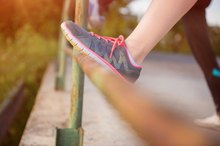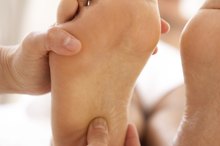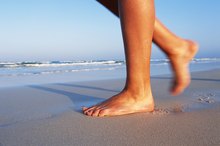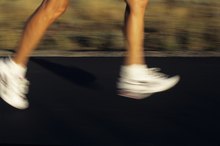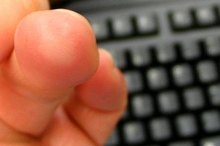What does fact checked mean?
At Healthfully, we strive to deliver objective content that is accurate and up-to-date. Our team periodically reviews articles in order to ensure content quality. The sources cited below consist of evidence from peer-reviewed journals, prominent medical organizations, academic associations, and government data.
- The National Library of Medicine: Toe Injuries and Disorders
- The National Library of Medicine: Bunions
The information contained on this site is for informational purposes only, and should not be used as a substitute for the advice of a professional health care provider. Please check with the appropriate physician regarding health questions and concerns. Although we strive to deliver accurate and up-to-date information, no guarantee to that effect is made.
Bunions & High Arches
The foot is the foundation of the human body. Changes in the structure of the foot can cause pain and altered bio-mechanics throughout the body. The foot is made up of 26 different bones, and of those, 14 are found in the toes, according to the National Library of Medicine 13. Bunions can form in the joint of the big toe and cause pain and discomfort. Changes in the bio-mechanics of the foot including the arch height and other factors like shoe wear can cause the formation of a bunion.
If you are experiencing serious medical symptoms, seek emergency treatment immediately.
Anatomy
The foot is a complex structure made up of many bones and muscles. The foot has three arches that give strength and stability to the foot. The three arches are the transverse, lateral, and medial arch. The arches allow the 26 bones of the foot to move and support the muscles and ligaments that are present. According to the American Academy of Orthopaedic Surgeons, a bunion forms due to a condition known as hallux valgus 2. This is a Latin term that means a turning outward of the big toe. When this deformity occurs, the big toe becomes prominent on the inner border of the foot and a swollen joint and bursa form a bump known as a bunion. The bunion is made up of a combination of soft tissue and bone.
- The foot is a complex structure made up of many bones and muscles.
- The arches allow the 26 bones of the foot to move and support the muscles and ligaments that are present.
Causes
Tips for Relieving MTP Joint Pain
Learn More
The most common cause of hallux valgus is poorly fitting shoes, according to the American Academy of Orthopaedic Surgeons 2. Shoes with a tight toe box that push the toes together can lead to the formation of a bunion. High-heeled shoes are the worst for this condition. In fact, the American Academy of Orthopaedic Surgeons state that studies have shown that the majority of women in the U.S. wear shoes that are too small, and over half of them have bunions 2. Other factors like improper foot mechanics due to altered arch height play a role. If the arches of the foot are too high or too low, the foot will not move through its normal range of motion. This can lead to a condition of pronation that causes the person to walk on the inside of the foot, which can lead to bunion formation. Hallux valgus can also result from genetic factors and conditions like arthritis and neurological disorders.
- The most common cause of hallux valgus is poorly fitting shoes, according to the American Academy of Orthopaedic Surgeons 2.
- This can lead to a condition of pronation that causes the person to walk on the inside of the foot, which can lead to bunion formation.
Treatment
The National Library of Medicine states that bunions cause swelling, redness and pain in the big toe 13. They state that during symptoms a person should avoid tight fitting shoes, and if symptoms persist, seek treatment from a professional. Treatments include foam pads and spacers designed to provide relief from the symptoms. In severe cases, surgery is used to remove the bunion and realign to toe. Medline Plus states that over 100 different surgical techniques have been developed to treat bunions.
- The National Library of Medicine states that bunions cause swelling, redness and pain in the big toe 1.
- In severe cases, surgery is used to remove the bunion and realign to toe.
Prevention/Solution
The Best Shoes for Obese People
Learn More
The American Academy of Orthopaedic Surgeons state that bunions become painful over time, but not all bunions progress to painful symptoms 2. To prevent the progression, they advise a person to switch to shoes that fit properly and do not compress the toes. To find shoes that fit, they recommend a person buy shoes based on how they fit the foot and not by the size on the box. They also recommend regular measurement of the foot and consultation with a foot specialist to find the proper type of footwear.
- The American Academy of Orthopaedic Surgeons state that bunions become painful over time, but not all bunions progress to painful symptoms 2.
- To prevent the progression, they advise a person to switch to shoes that fit properly and do not compress the toes.
Expert Insight
The best treatment appears to be prevention. Wearing shoes that fit and do not alter the natural arches is key. If the arches are too high or too low, a person can use an orthotic to help support the arch and allow proper foot movement.
Related Articles
References
- The National Library of Medicine: Toe Injuries and Disorders
- The American Academy of Orthopaedic Surgeons: Bunion Surgery
- The National Library of Medicine: Bunions
- American Academy of Orthopaedic Surgeons. Bunions. Updated February 2016.
- U.S. National Library of Medicine Genetics Home Reference. Bunion. Updated August 2018.
Writer Bio
Brady Williams is a third-generation chiropractor who has been writing and lecturing on topics in health, nutrition, chiropractic, sports medicine and wellness since 2006. He holds a Bachelor of Science in general science and a Doctor of Chiropractic from Palmer College of Chiropractic. He also holds a Master of Science in sport science and rehabilitation from Logan University.

